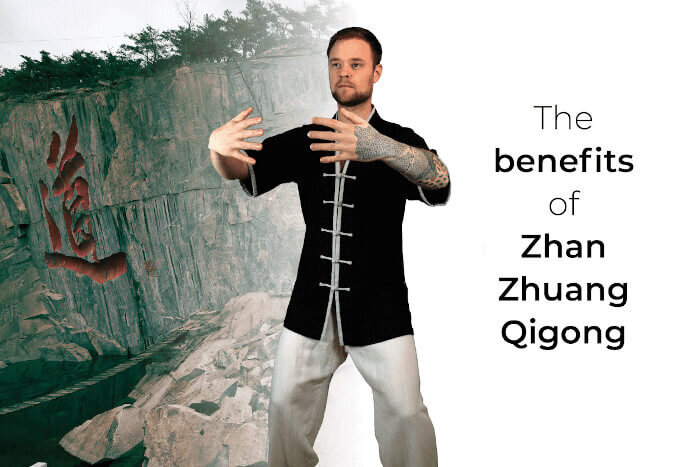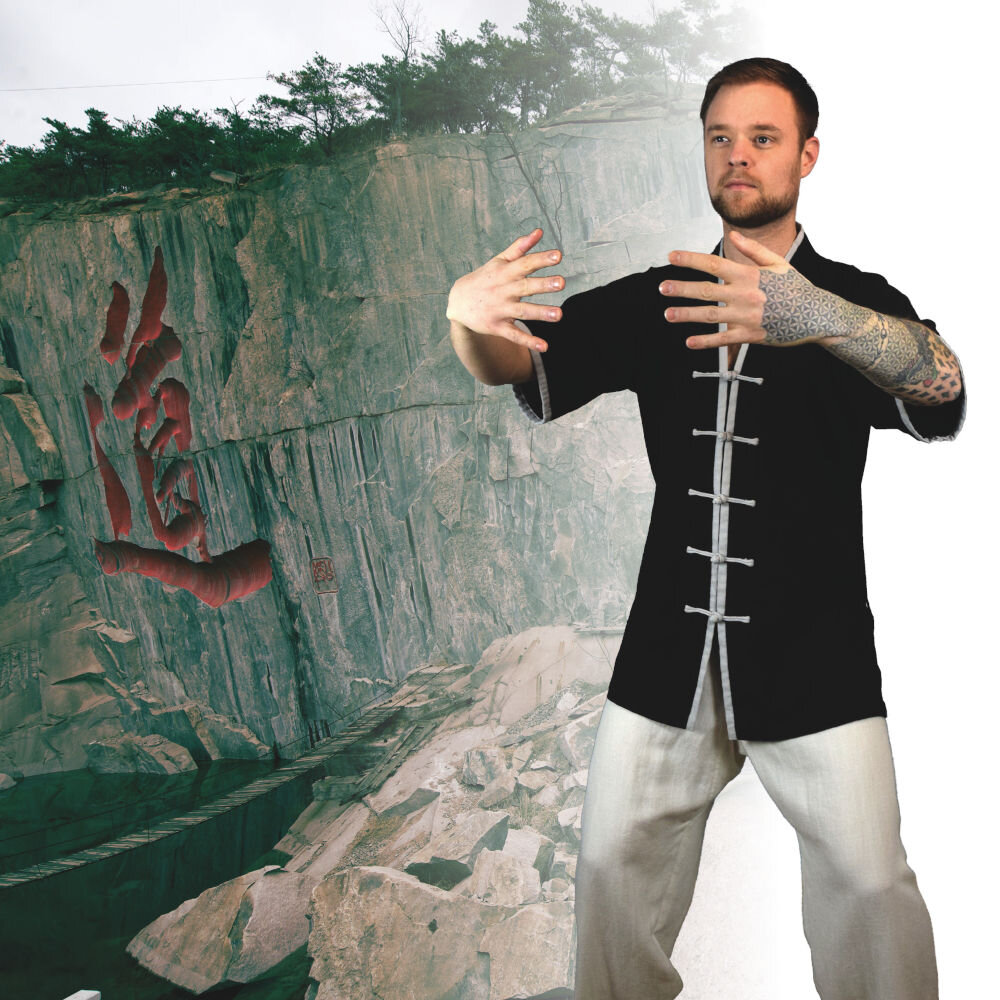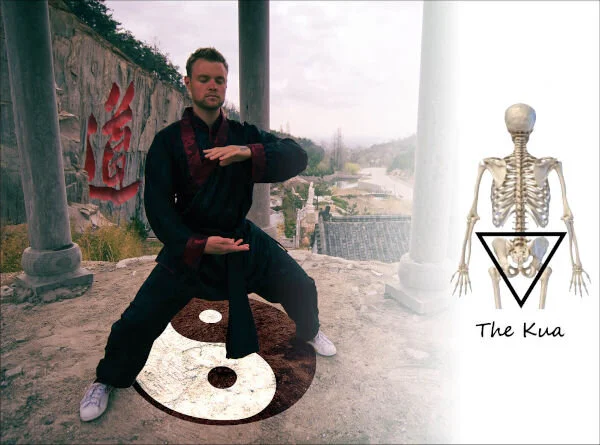Zhan Zhuang Qigong - Standing like a pole
Understanding Zhan Zhuang Gong as a practitioner of Qigong for health purposes.
Whether you practice internal martial arts or Qigong for health purposes, Zhan Zhuang is an essential part for developing health, strength and a great sense of body-awareness. The martial artist will slowly narrow the center line of the body and tap into full body connected power. Practitioners for health purposes will be able to identify the most subtle physical and energetic blockages or tension. Standing like a pole promotes an improved circulation through deep relaxation. We find movement in stillness while maintaining the nourishing and transformative state “song” which activates the body’s natural healing capability.
I wrote two posts about Zhan Zhuang. In this one, I will go more in detail about the health benefits. The second article includes more details about the use in martial arts.
To get a complete understanding of the Standing Pole Exercise let’s learn a bit about its history!
The origin of the Zhan Zhuang Qigong practice (also known as standing pole or hugging the tree exercise) can be traced back as far as the 3rd century BC, though it’s debatable as to when exactly the system was developed, and by whom. In fact it’s unsure what Zhan Zhuang was originally developed for. However, The Yellow Emperor's Inner Classic (Huangdi Neijing, 黃帝內經) which is the most important ancient text in Chinese medicine as well as a major book of Daoist theory and lifestyle, suggests that the performed static standing exercises were practiced to cultivate inner peace, health and to balance the body.
In the early Qing dynasty (17th century) this practice was widely spread and commonly practiced by the Shaolin monks. Even though it was not exactly the same version as the standing pole exercise as we know it today, at first glance, the concept seemed the same. The Shaolin warrior would maintain a single posture for a long period of time, essentially a “horse-stance” which was supposedly held until one doesn’t feel any discomfort or fatigue anymore. Everyone who has spent a few minutes in a horse-stance knows that this practice is mainly strengthening the legs and lower back and maintaining relaxation is a more than difficult task. Through diligent practice you will be able to cultivate a very low centre of gravity and firm root which allows your body to stand very stable and well balanced.
The concept of Zhan Zhuang
First of all, Zhan Zhuang is very helpful to condition the body into the correct postural alignment. The process of “flattening the lumbar curve” is considered important in order to increase your power through an entirely connected body (martial arts). This alignment is also extremely helpful to bring the Qi down, relax the muscles and tissues downward while the bones stay suspended and the joints open. Important cues to stand in this posture correctly is the tilting of the pelvis and bringing the tailbone down. Be carfeul, these cues often lead to tense the psoas muscle. That’s why it is important to remember relaxing the buttocks at the same time and let it hang down as if a weight is attached to the coccyx.
In the drawing above you can see the general alignment for Zhan Zhuang practice. This position is the beginning point of practice and will help you narrow down the centre line of your body. However, after enough practice you will be able to sit back further into the Kua which will change the alignment slightly.
I personally wouldn’t go as far as claiming that the standing pole meditation is “the ultimate way” to build a foundation for internal martial arts and increase and maintain health, but I believe it is an essential corner stone which can teach us a wide range of things about ourselves. At the very least, I know that static postures are necessary to create the awareness of the body and its connection with the lower Dan Tian. With this knowledge about the constitution of our bodies we will be able to train more effectively. Ultimately, this will greatly benefit our practice.
Another important fact is that standing pole exercises (should) closely adhere to the principles of the Yijin Jing and Shenfa, the method of body-development Qigong. This means it is necessary to practice them according to the guidelines which are given to us by the ancient texts. In Zhan Zhuang you should try to relax the muscles so that they hang and stretch off of the bones. Muscle and bone will separate from each other. Bones up or away from each other (open joints) and muscles down, the muscles relax and “hang”. This is the most important principle in body development.
There is a concept in Qigong for health and the internal martial arts that movement is inside stillness and stillness inside movement. In order to gain a deeper understanding of this concept I suggest reading the posts “The Concept of Qi” for learning about internal energy and “The Concept of Yi” for understanding the connection between this energy and the mind.
Essentially you can picture the body as one unit and imagine a web of tissues, different elastic bands and sheets of fascia. This web is full of potential to create motion, and training it, will cultivate stronger potential of power. San Ti Shi, Zhan Zhuang and the postures of the Yijin Jing all focus on stretching major tendon lines and tissues of the body. These lines are all leading back to the centre, the lower Dan Tian, which acts like a major connection point for all motion created. This centre can sink, tilt or rotate. When this action occurs and the body is held static, you are basically loading this web with potential energy- This energy can be transformed into power if the practitioner chooses to release the tension.
Stillness in motion and deep relaxation
Once we have cultivated a good sense of awareness we will be able to identify the most subtle physical and energetic blockages or tension. We often think that we are relaxed, but often this relaxation is only superficial. Deep relaxation reaches all the way into the bones, as we learned in the Qigong relaxation theory. Once we stand in Zhan Zhuang, our sore muscles shaking, we will have to admit that we are not really as relaxed as we thought we were. Practicing will show us places of tension that are deep within our bodies and by using our mind and the breath we will be able to release them. That being said, it is also very helpful to complement the Zhan Zhuang training with various stretching exercises. Depending on how much chronic tension exists in the body, we may have to unbind and open the tissues on a gross and superficial level first. Step by step, we can move further into the deeper regions of the body.
Through awareness we develop a natural connection and engage the whole body.
Generally speaking, most people loose the awareness of their bodies. (I know it’s a bold statement). It will stop working as one unit, and movements will be segmented. This is quite common in today’s society. That’s why, the novice, first needs to reclaim their sense of awareness and develop it to a high degree. If we look at the “Cloud Hands Exercise” in a Taiji form for example, you might see a beginners hand hanging soft “like dead” or the foot hangs loosely during a step. In order to move our body in unity we need to create a good sense of awareness. Simply by placing our awareness on a specific area in the body we will be able to engage this part. The hand will become alive and the action of moving it in this state of “readiness” will be executed with the correct amount of effort. With the awareness on your foot during a step, the foot will be engaged and actively searching for gripping the ground. This awareness, though it is extremely hard to apply during motion, is an important part of practice. When we stand still in Zhan Zhuang, we are able to practice this microscopic awareness. When we scan the whole body from the top of the head to the toes, we will make the whole body engaged and start seeing the requirements of each body part necessary to go through complex motions.
Breathing in Zhan Zhuang.
There are different techniques for breathing during your Standing Pole Meditation. These techniques are often paired up with different visualizations in order to practice safely and learn how to focus on the lower Dan Tian. One of these visualizations , for example, is breathing into your feet. This is done to lead the Qi down and prevent it from “getting stuck” in your upper torso. Generally speaking, we should breathe naturally. Most likely, this doesn’t mean the kind of breath that comes naturally to us because it often is not the most effective way. We might have a deficient way of breathing due to previous injury, an unhealthy lifestyle or certain habitual behaviors. Natural, in this case, most likely means embryonic breathing, also known as “back to childhood breathing”. While a baby is developing in the womb and when it is born, the baby breathes through its navel without using it’s lungs. This is breathing from our centre point and is called the “original breath”. Our goal in Qigong is to go back to this kind of breath because it nourishes the body, stimulates the internal organs and is the key to a smooth circulation of energy within the body.
Zhan Zhuang promotes deep relaxation.
From TCM (Chinese traditional medicine) we know that Xin (our emotional mind) governs most of our body. All our thinking processes and organs are controlled and regulated by it and therefore it is under constant “work load”. If it is too excited and exhausted, due to to physical, emotional or mental strain, our vital organs function inefficiently and sickness or diseases can manifest. When practicing Zhan Zhuang, naturally we first need to cultivate a peaceful and concentrated mind, calming down the fire of our Xin. This will promote the Xin (which encompasses the entire cerebral cortex and central nervous system) to reach a state of rest and recuperation. With Xin in “resting mode” our bodies can relax while maintaining an appropriate degree of stimulus (engagement) and reach a nourishing state in which the blood flows freely. This unobstructed blood flow is one of the most important elements of the Standing Pole Exercise for development and maintenance of health. With the body assuming the correct posture and a relaxed Xin, your blood circulation is improved greatly and Qi can reach every part of your body and nourish it. From the outside the body appears to be still, but on the inside, all the vital organs can settle and metabolic function increases. This is why it’s called movement within non-movement. - Zhan Zhuang promotes unhindered internal activity which leads to a natural adjustment of your Qi in the organs while maintaining external stillness.
I offer various courses that help you on your journey of self cultivation and body development. If you wish to learn more about Zhan Zhuang, I would like to invite you to take this free course!











